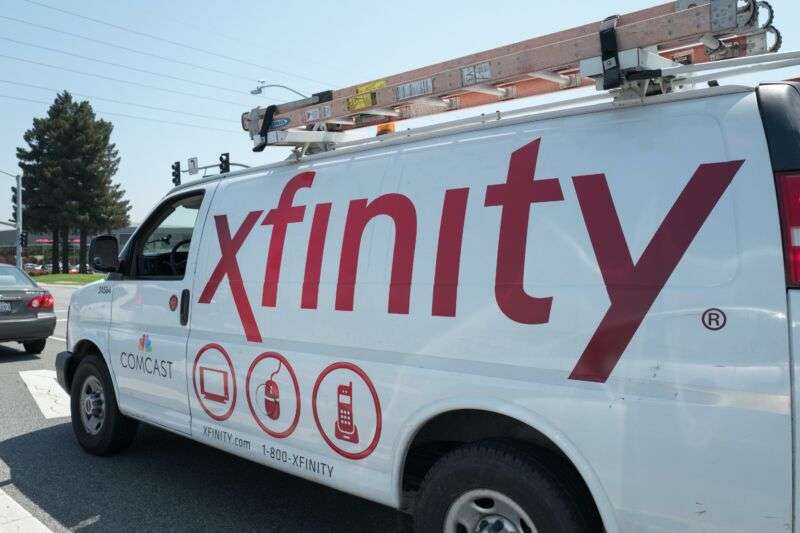
Ajit Pai promised faster broadband expansion—Comcast cut spending instead

Comcast reduced capital spending on its cable division in 2019, devoting less money to network extensions and improvements despite a series of government favors that were supposed to accelerate broadband expansions.
“For the twelve months ended December 31, 2019, Cable capital expenditures decreased 10.5 percent to $6.9 billion,” down from $7.7 billion in 2018, Comcast, the nation’s largest home Internet provider, said in its earnings announcement last week. “Cable capital expenditures represented 11.9 percent of Cable revenue compared to 13.8 percent in 2018.”
Comcast cable revenue rose 3.7 percent, from $56 billion in 2018 to $58.1 billion in 2019. Cable-division EBITDA (earnings before interest, tax, depreciation, and amortization) rose 7.3 percent, from $21.7 billion to $23.3 billion in 2019.
Comcast reports cable-division capital expenditures in four categories, and its full-year spending dropped in three of them. Comcast spending on line extensions—defined as “costs associated with entering new service areas… includ[ing] fiber and coaxial extensions”—dropped from $1.5 billion in 2018 to $1.4 billion in 2019.
Comcast spending on “scalable infrastructure,” which provides additional bandwidth and other service improvements, dropped from $2.6 billion to $2 billion. Spending on customer-premises equipment dropped from $2.9 billion to $2.7 billion.
The only one of these categories in which Comcast spending rose in 2019 was support capital, which includes “land, buildings, vehicles, office equipment, tools, and test equipment.” Spending in this area rose from $767 million to $858 million.
2019 was the second straight year that Comcast lowered its overall cable capital expenditures (though Comcast’s spending on line extensions and scalable infrastructure rose in 2018).
Pai promised spending increase
This wasn’t supposed to happen, according to claims that ISPs and Federal Communications Commission Chairman Ajit Pai made in order to push through the repeal of net neutrality rules and other deregulatory measures. Pai, who just today released an 11-page list of his accomplishments as FCC chair, repeatedly argued that net neutrality rules caused broadband providers to reduce capital expenditures. After his net neutrality repeal took effect in June 2018, he claimed that the repeal and other FCC deregulation caused investment to rise.
But Comcast isn’t the only major ISP cutting investment, as AT&T projects that it will reduce capital spending from $23 billion in 2019 to $20 billion in 2020. Charter Communications said in October that its capital expenditures excluding mobile services would total $7 billion in 2019, down from $8.9 billion in 2018. Verizon also reported a capital-expenditure decline in the first nine months of 2019.
In addition to the net neutrality repeal, a corporate tax break approved by Congress and President Trump didn’t result in the promised investment increases.
“The truth is that ISPs invested just as much or more under Title II [net neutrality rules] as they did before or since, and Pai was lying the whole time,” Free Press VP of Policy Matt Wood wrote on Twitter. “These regulations don’t drive investment. Demand and competition do.”
But while these capital spending declines undermine Pai’s deregulatory arguments, Comcast views the trend as positive news. In last week’s earnings call, Comcast CFO Michael Cavanagh described the decline in capital spending as a percentage of revenue as a “year-over-year improvement.”
Cavanagh said that Comcast will “continue to improve our capital intensity” going forward. But after a cut in 2019, Comcast could increase spending on network improvements in 2020. In the coming year, Cavanagh said there will be more decreases in spending on in-home TV equipment, “partially offset by an increase in the level of investment in our network, consistent with the broader shift in our business toward [broadband] connectivity.”




